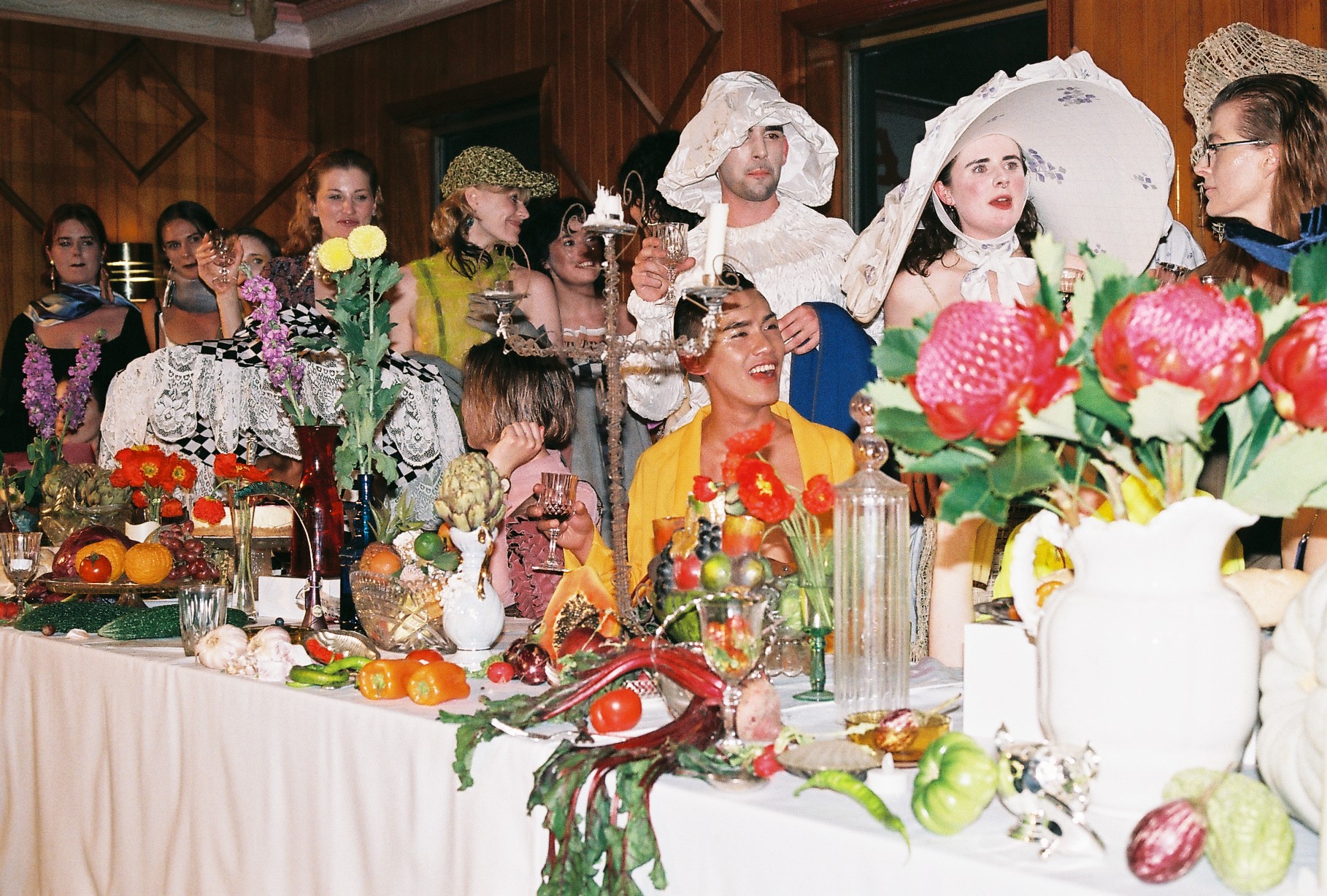For many young designers, crowdfunding has opened the door to new, autonomous and freeing possibilities. In Melbourne, collaborative graduate presentations like The Final Banquet, funded through sites like Pozible, have come to represent some of the most pure and exciting showcases of local contemporary fashion. Last year’s Hollywood Seven, which utilised an entire motel complex, and 2015’s Salumi Salon, held in the Queen Victoria Market’s Deli Hall, raised the bar for playfully grandiose presentations. One of several independent graduate shows this year, The Final Banquet carried the baton with a spirited spectacle in the function room of Alasya, a Turkish restaurant in Brunswick.
Featuring the works of RMIT honors graduates Alex McQuire, Claudia Vella Emilia Colicchia, Ourania Mamalis and Mia Schaumann, the show raised $6,200 via crowd funding to cover costs and attracted dozens of volunteers who made sure things ran smoothly on the night. For the show, models convened around a long table, groaning with delights, at the end of the catwalk as an ode to ritualistic celebration. Meet the designers who helped engineer this incredibly uplifting ‘fashion-moment’.
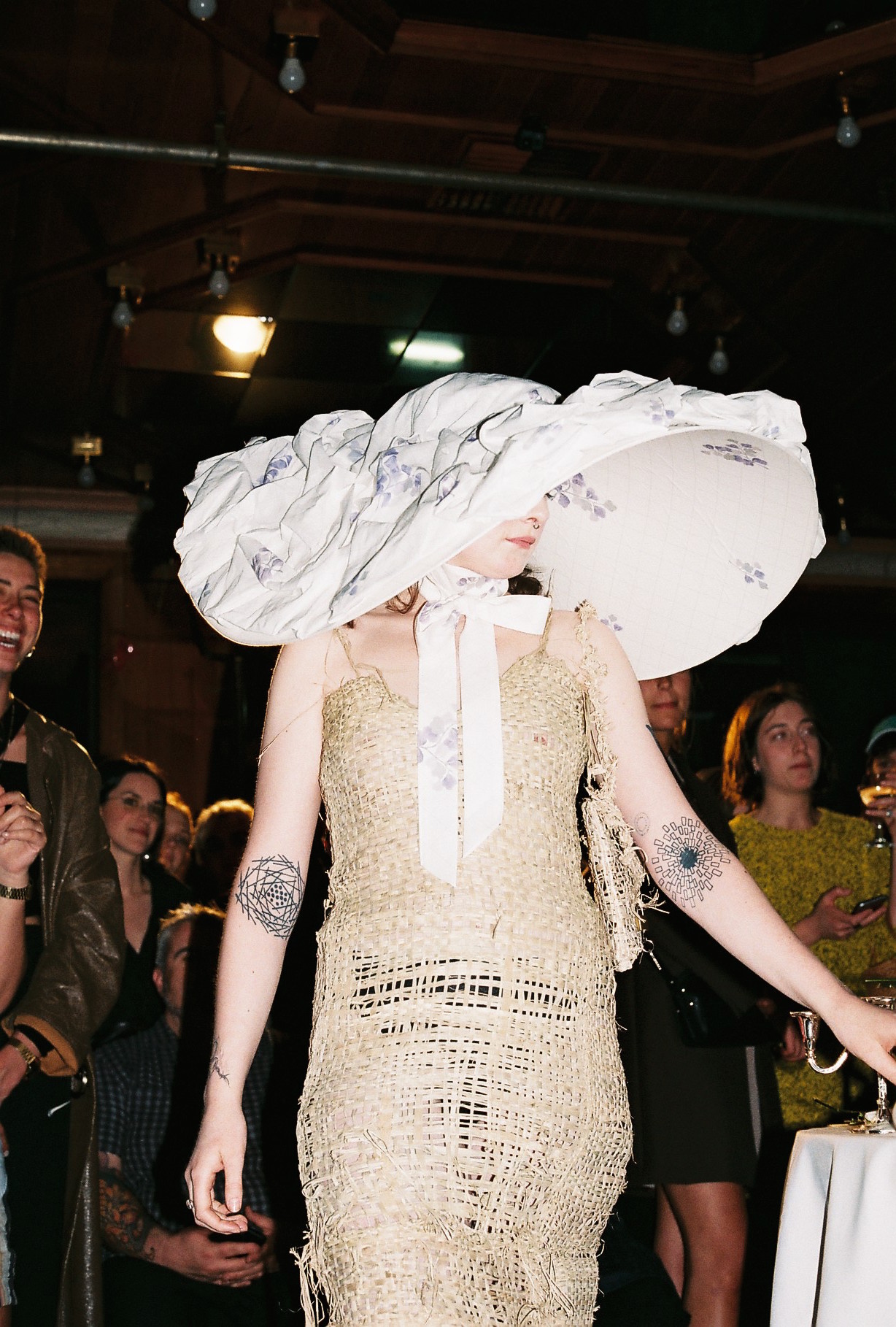
Alex McQuire
Your collection combined differing textures and ideas really cohesively. What was your unifying theme?
I’m interested in the role dress plays in mediating experiences and ideas of collective representation. The unifying theme was more of an approach to understanding how different combinations of materials and garment archetypes might inform the wearer’s experience. Making this collection helped me realise that I don’t like designing to singular themes — it was more about setting up a process that allowed me to interrogate the characteristics or personas people associate with particular garment types, materials and silhouettes. This collection was designed as a series of NQR renditions of ‘classic’ garments and accessories, for example: a formal dress weaved from raffia, a suit tailored in lycra, or a handbag made out of foam — something about the composition of each piece in the collection disrupts its supposed purpose, and that’s what I find interesting.

The collections worked really well as a whole but what informed the group’s decision to present together?
We’ve all become very close working alongside each other for the past few years and have always wanted to do a show together. It was as much a celebration of the time we’ve spent together at RMIT as it was to present our graduate collections.
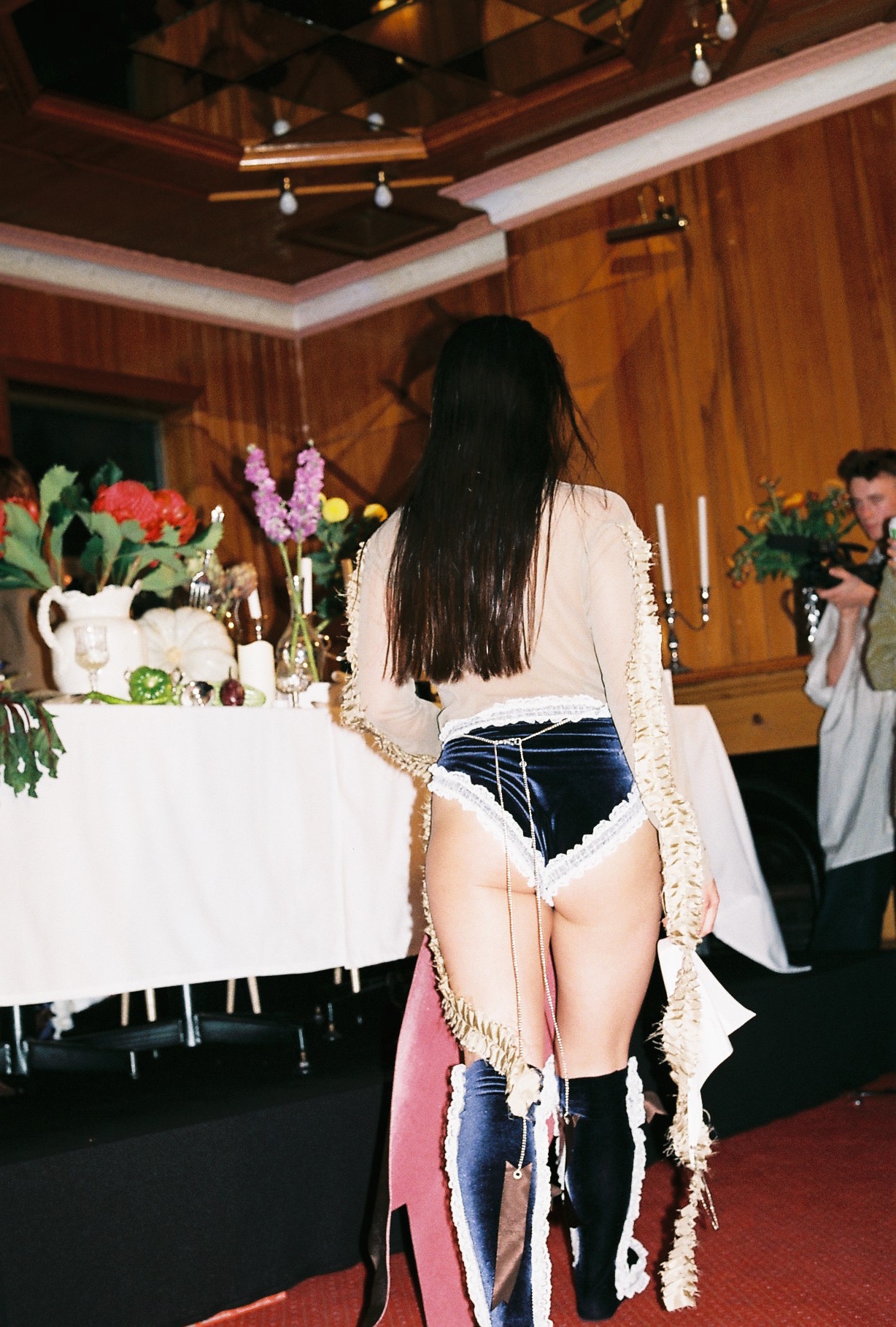
Claudia Vella
Your collection was really playful, but also very elegant and romantic. Can you tell us about the mood you’re conveying with the garments?
That was definitely the mood I wanted to convey. Maintaining playful details within my garments is an important element to my practice, I love bringing a sense of lightheartedness to my work, particularly through the use of a giant ruffled hat that required a pair of velvet poles to keep the brim above the model’s eyes. I love creating a sense of fun in my work with definite elements of romance. This year my garments have been made to thrive in the context of a narrative, so the emotive atmosphere of The Final Banquet was really the perfect place to see that come to life.

What do you think the success of The Final Banquet says about the current climate for contemporary and emerging fashion in Melbourne?
The genesis came from the five of us wanting to create a space where our diverse practices could be celebrated in a context where fashion can be interpreted and enjoyed by anyone. I think in a world saturated in imagery, we have the means to see what’s already out there and utilise our ideas to create something that is important to us and our peers. Melbourne’s emerging fashion is embracing these captivating and exciting modes by which practices have the potential to be presented.
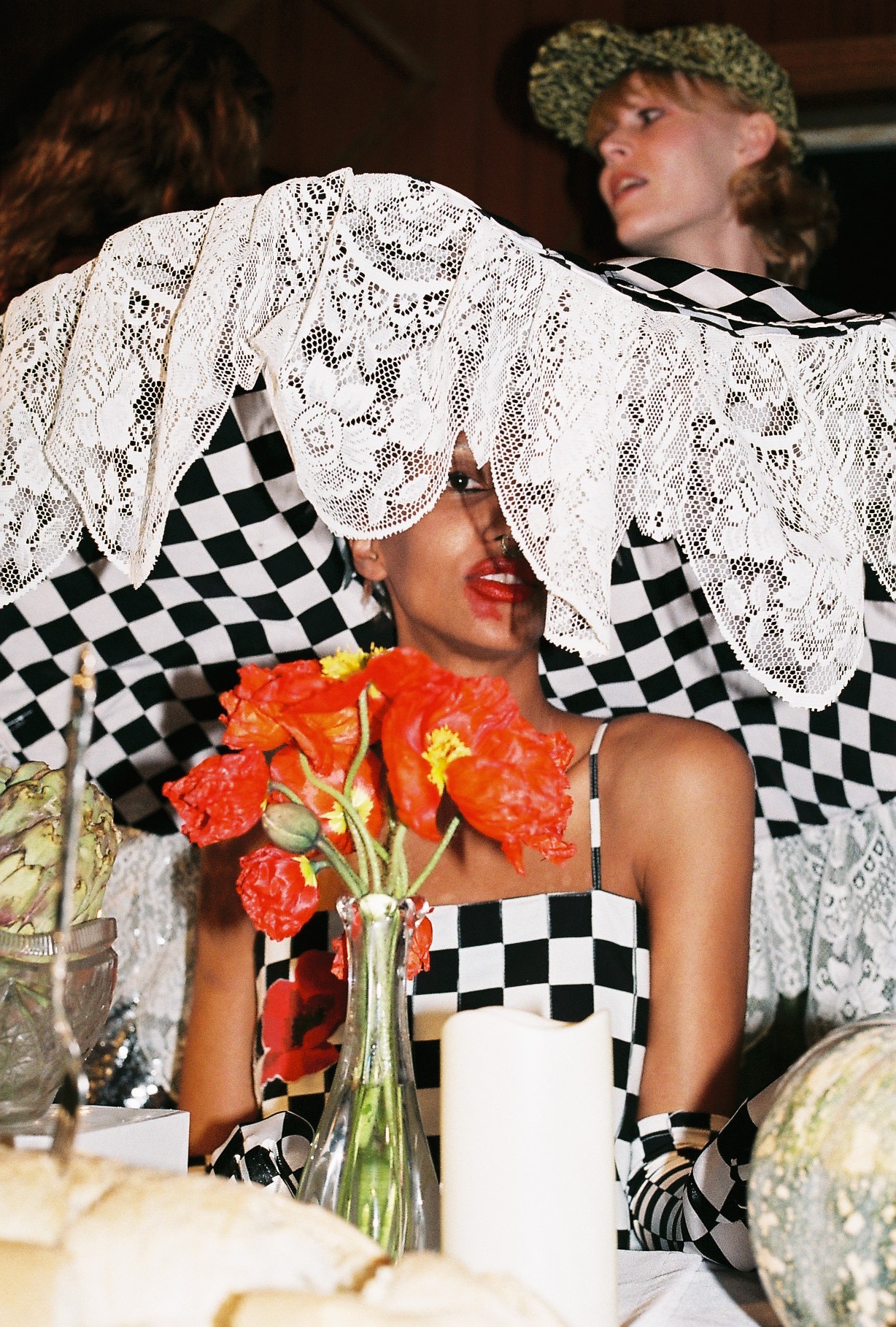
Emilia Colicchia
There was a lot of high drama in your collection, from the couch-y silhouettes right down to the details (those cowboy hats!) Can you tell us about the world you created?
This collection was inspired by spaces of self expression, our personal relationship with home and our need for decoration. I explored the relationship between these two forms of self expression; the body and the home, situating both within the same space to compliment one another and generate dialogue. The world I created is quite a personal reflection of all the textures, prints, rules and memories in my own home. When I began to translate the motifs and forms from the house and re-contextualise them on the body it created a lot of drama as the furnishings were taken into a different context, picking up on the tension between function and ornamentation.
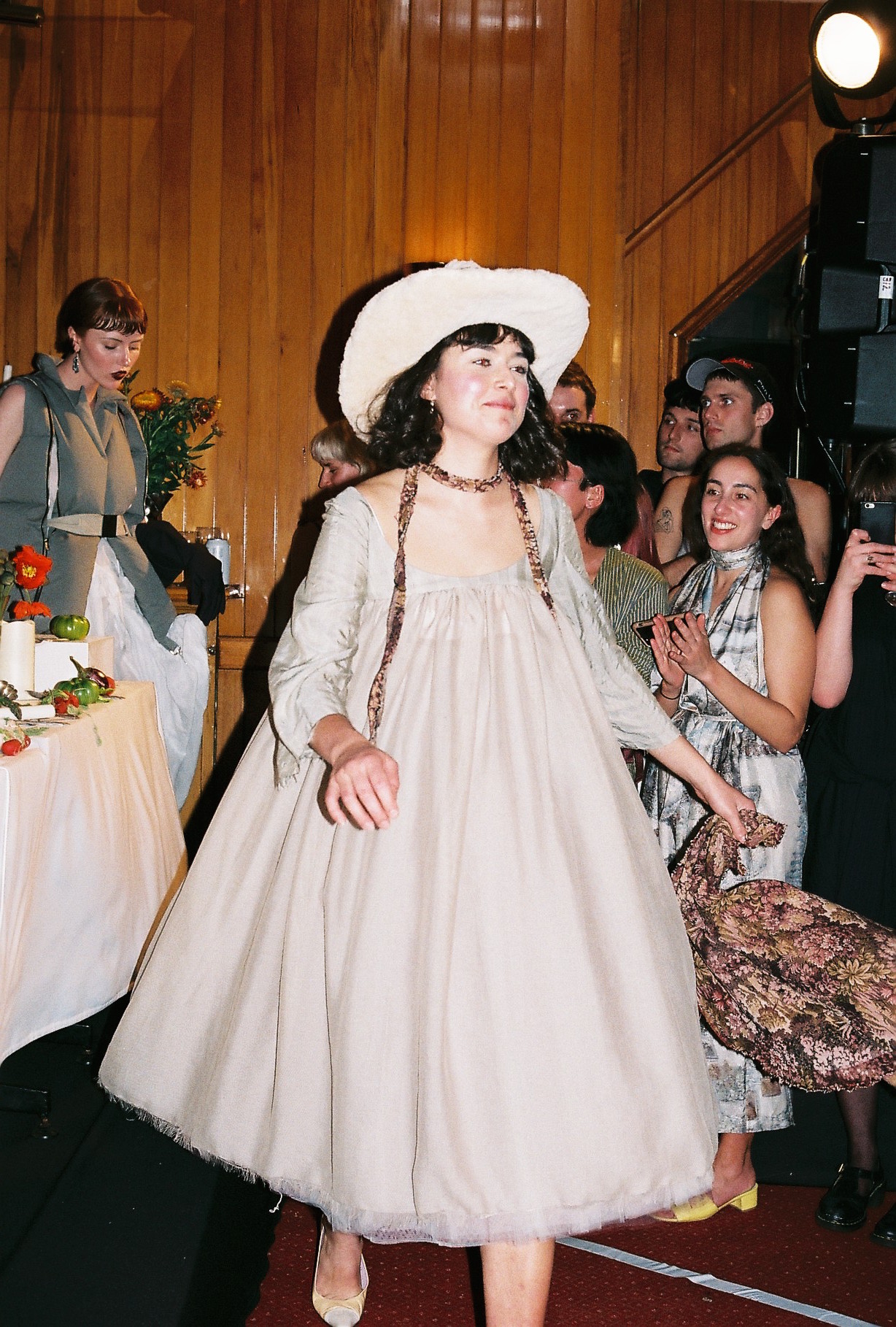
How does crowdfunding change the game for young designers?
As young designers, using a crowdfunding platform was the only way we could’ve made The Final Banquet happen as we’d already poured all our money into our collections. It was really important to make sure that it was a non-ticketed event so crowd funding was really necessary to cover all the costs. It wasn’t the easiest process – there were a few hiccups along the way with payments and fees and we were really unsure as to whether we were even going to receive our money in time. However as young designers with no money, to make this event happen independently, we were able to afford to communicate and disseminate our work the way we really wanted which was so rewarding! We were so surprised with all the support we ended up receiving and are so grateful to everyone who donated!

Ourania Mamalis
Your collection had a lot of interesting print work, such as a reimagined tartan. How were they developed?
Initially I was exploring how I personally relate to my clothing, investigating my fascination with how and why we dress and exploring our relationship with light, space and cloth. My prints were developed with the intention of playing on the illusion of fabrics and the idea of disturbance within a recognisable fabric. I photographed fabrics in sunlight and printed them onto a variety of silk organzas and power mesh to add a surreal quality to the viewing and experience of the garments. The tartan print was a scan of an existing yellow tartan which was then distorted and printed onto silks and power mesh as a way to re-contextualise its material meaning.
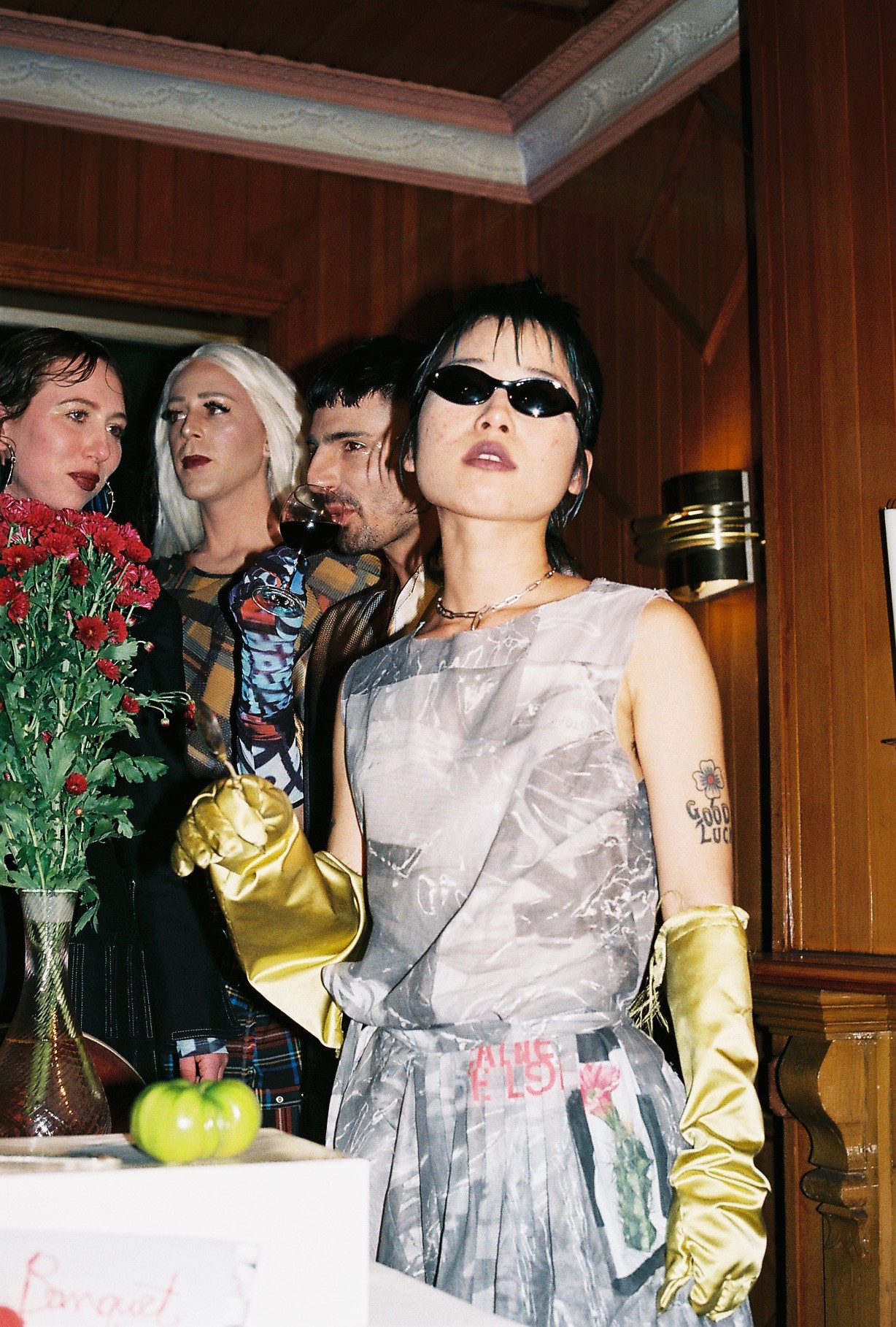
Mia Schaumann
Your styling was really strong – did you design the garments with the total looks in mind or as stand alone pieces? I never designed with total looks in mind when I began my collection, and styling is something that happened quite late in my process. I am a fairly average drawer and my process has always been routed in concept. This collection acts as an exploration of my relationship with time, using garments as a means of making time tangible. For this collection it was a matter of making a series of interchangeable garments that explore some aspect of this concept as opposed to total looks.
Tell us about the decision to show at Alysya? I think for all of us it was important to show our work in a non-fashion context. We’d found that how fashion is experienced by the public is often misunderstood and completely abstract from what it is to create it. This whole year of building a collection has been such an intense but rewarding experience and I think we wanted to try and emulate some of this energy through our space and opted for something with its own personality and character. All of us have had to defend studying fashion and for us using the dining experience was a means of playing upon the ritual nature of both food and dress and hopefully through doing so, making it more accessible to people. In the end we wanted The Final Banquet to be more of a celebration than anything super serious and Alasya worked really well for us in this regard!
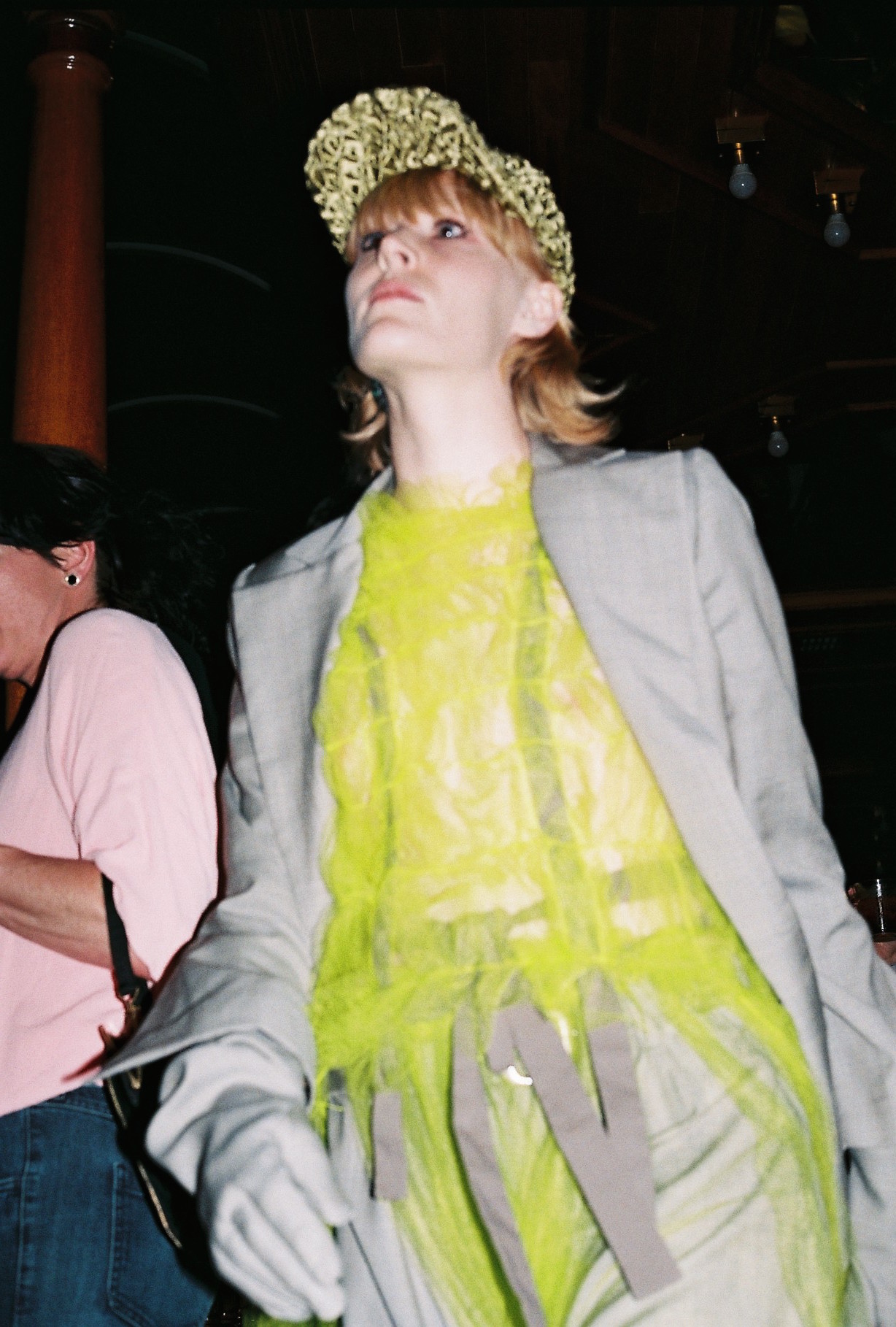
Credits
Text Sasha Geyer
Photography Hannah Alexander
